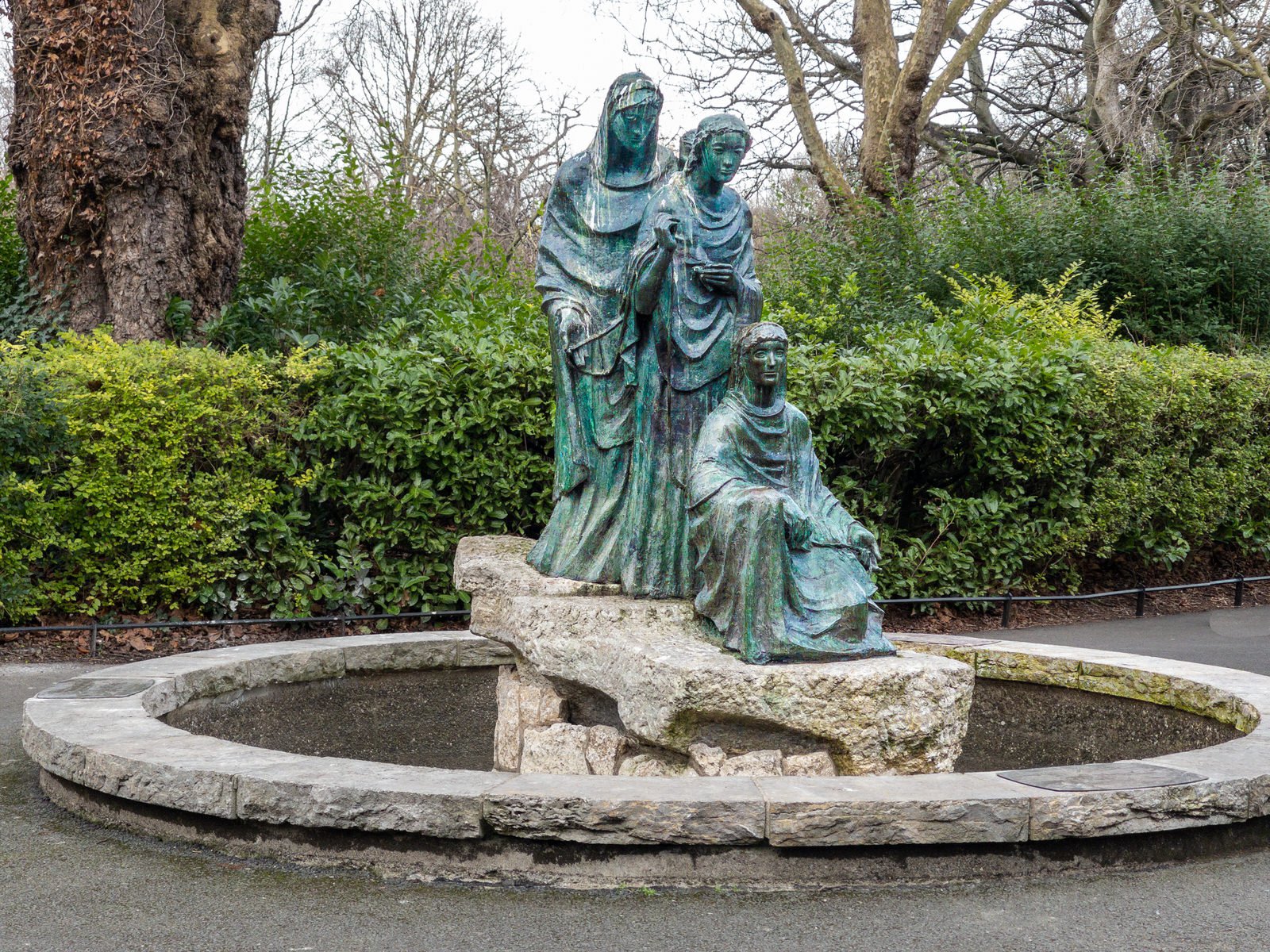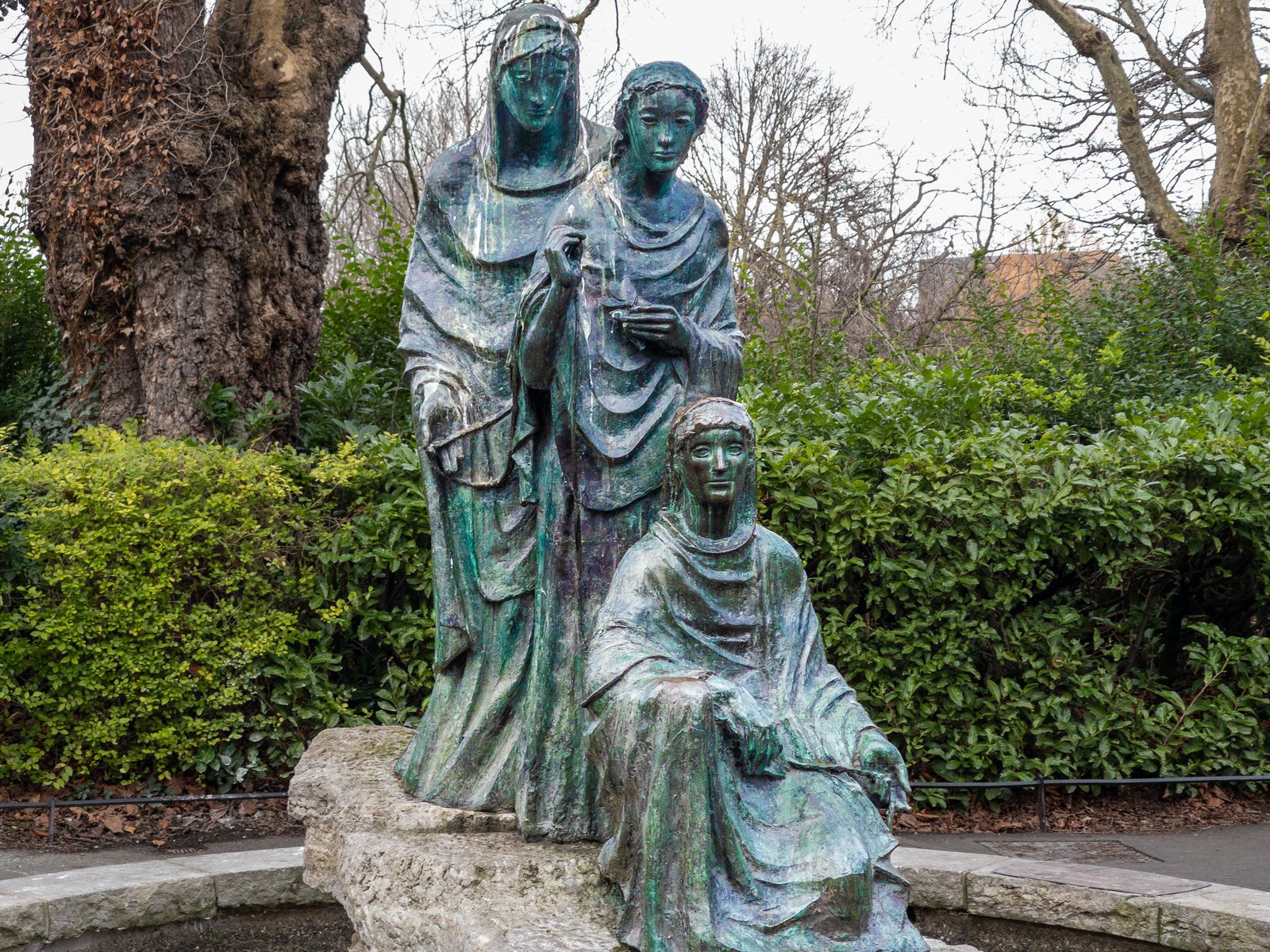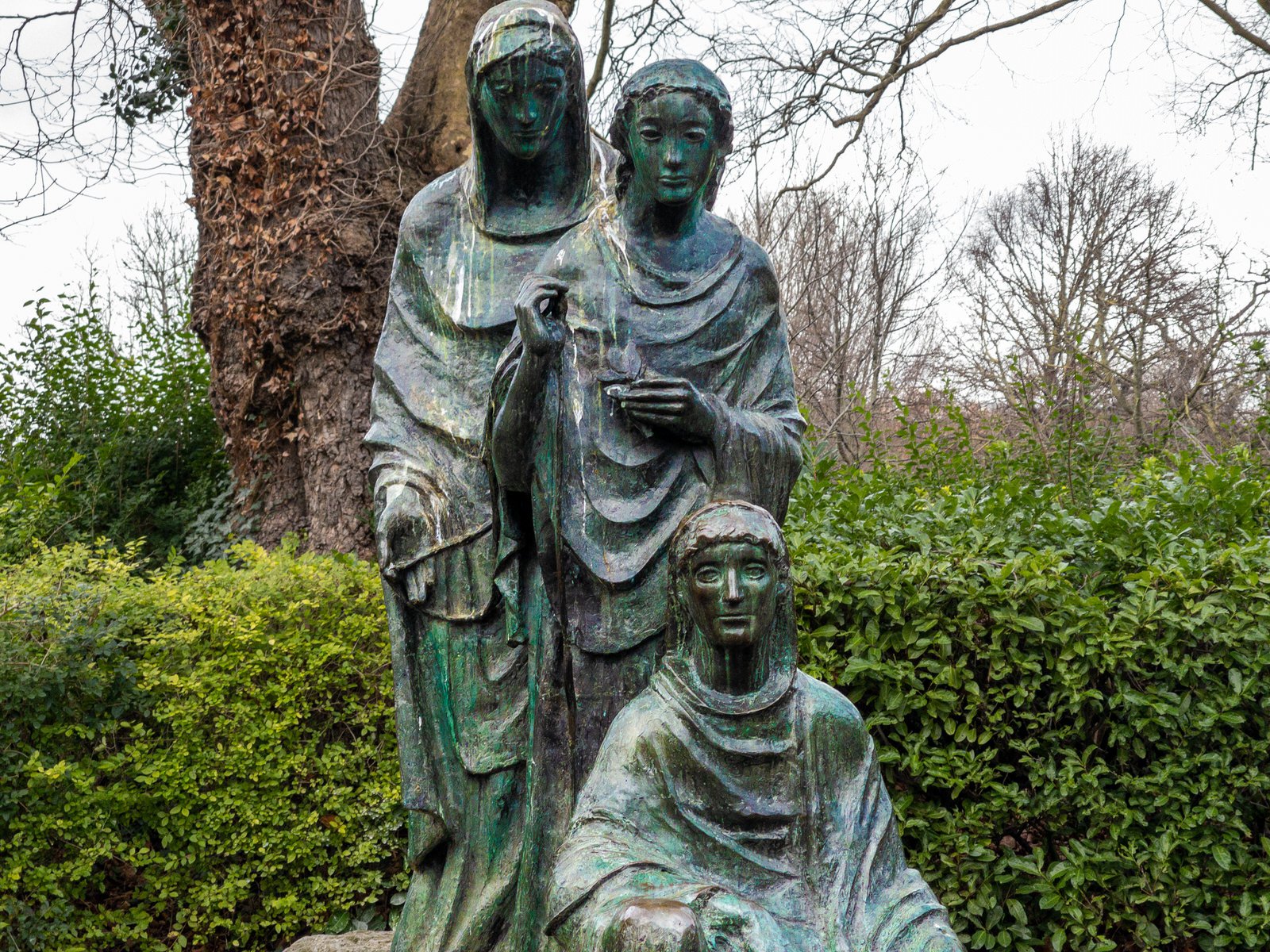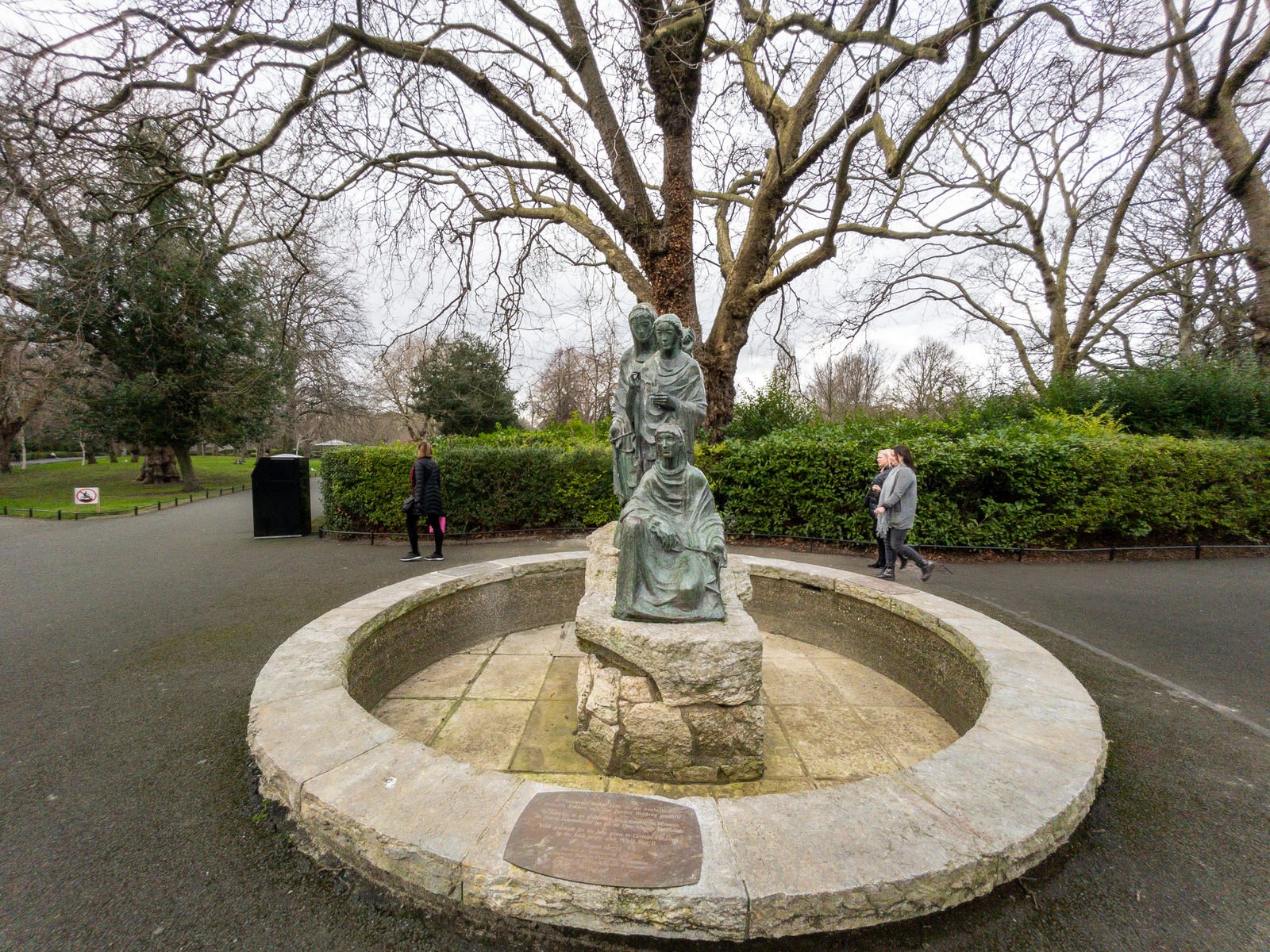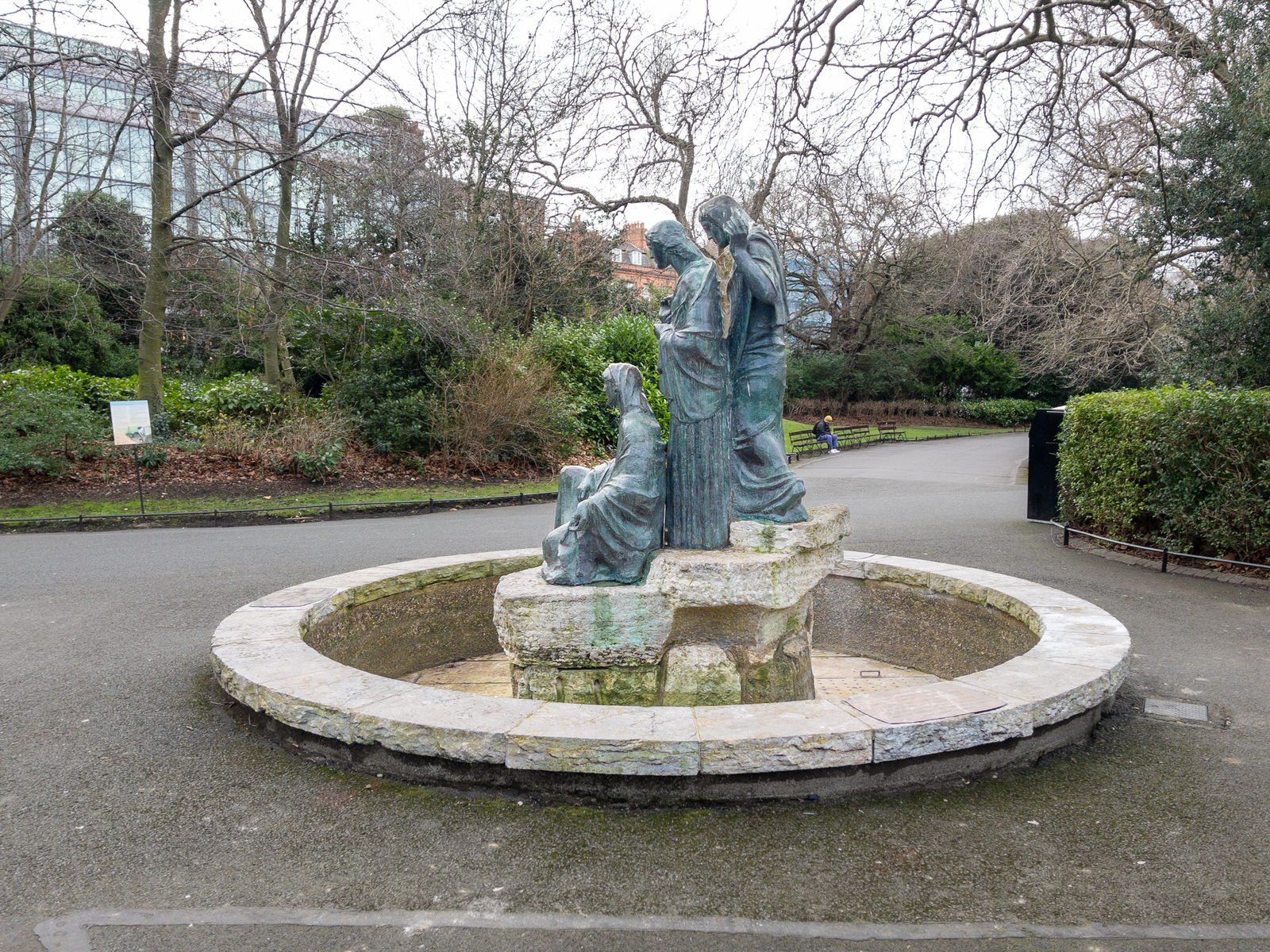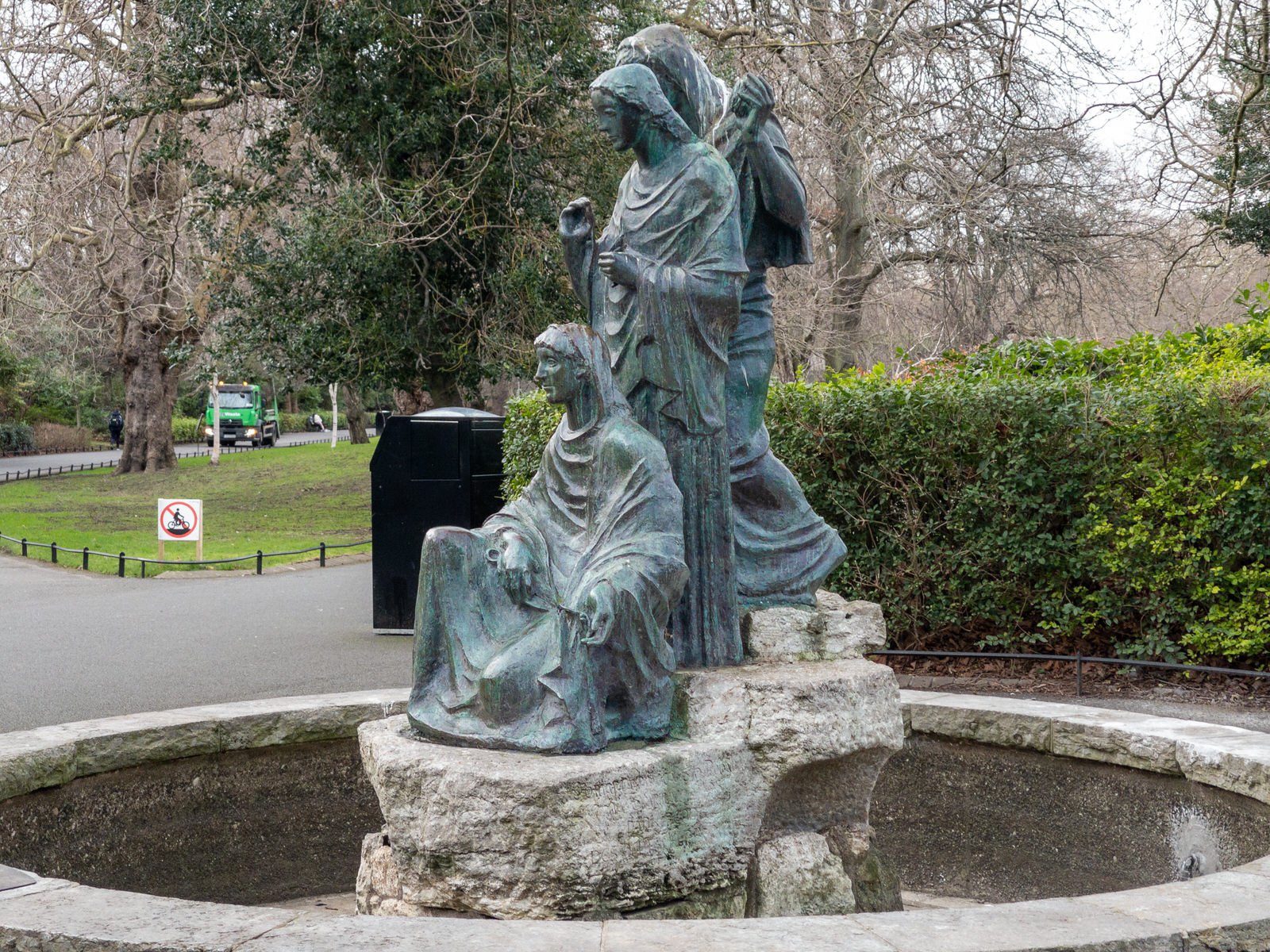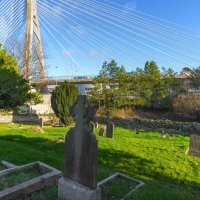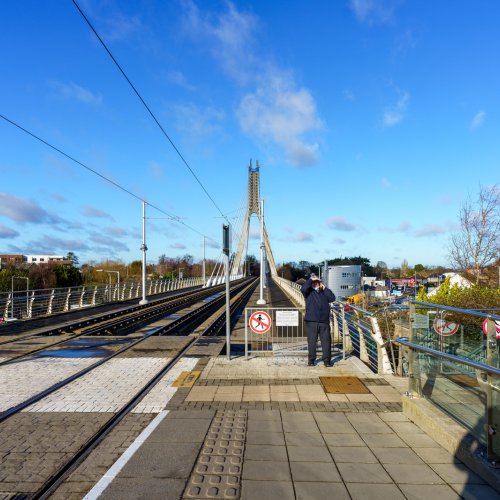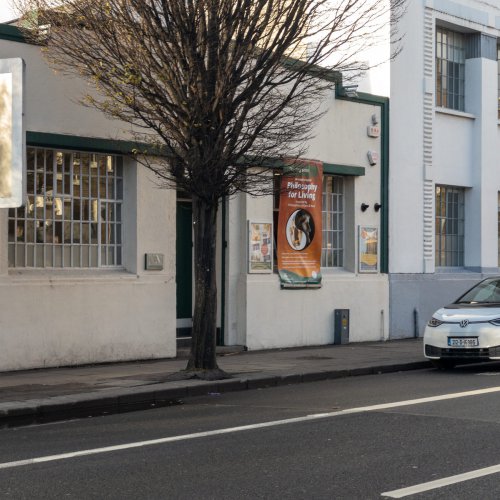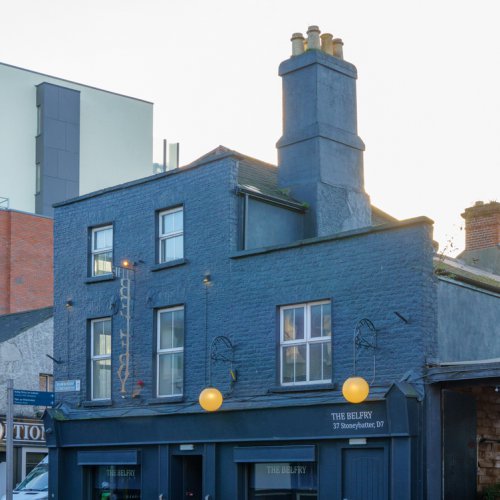Bronze sculpted statue of three robed and hooded female figures cast in two sections, highest figure with left hand raised and holding spool of string, middle figure standing with right hand raised, third and lowest crouching, each figure holding piece of thread. Three brass plaques fixed to top of wall around fountain, that facing east inscribed 'With gratitude for the help given to German children by the Irish people after World War II. Roman Herzog president of the Federal Republic of Germany 23.03.1997'; inscription repeated in Irish and German. Plaque to south side inscribed 'This fountain designed by the sculptor Josef Wackerle is the gift of the people of the German Federal Republic to mark their gratitude for Ireland's help after the war of 1939-45. Group portrays the legendary Three Fates spinning and measuring the thread of man's destiny'; inscription repeated in Irish on plaque to north.
Operation Shamrock was a scheme bringing refugee children from mainland Europe to Ireland in the aftermath of the Second World War. It was organised by the Irish Red Cross, and involved about 500 children, mostly from Germany, who stayed for three years before returning home.
Irish assistance to Germany reinforced in Britain the perception, fostered by wartime neutrality, that Ireland was pro-Nazi. Conversely, West Germany in the 1950s had gratitude for Ireland's postwar relief aid, and ties grew between the countries. In January 1956 a memorial fountain sculpted by Joseph Wackerle and commissioned by the German Gratitude Fund was unveiled in St Stephen's Green, Dublin, by the West German ambassador.
In 1961, the German war cemetery was opened near St Kevin's Hostel, Glencree, for graves of German aviators killed in Ireland during the war. In 1974, the hostel became the Glencree Centre for Peace and Reconciliation, which played a role in the Northern Ireland peace process in the 1990s.
German-language courses provided for refugees in Dublin led to the foundation of St Kilian's German School.
In March 1997, a reunion of over 300 foster-children and families was held at the German embassy in Dublin, attended by Presidents Mary Robinson of Ireland and Roman Herzog of Germany.
As part of The Gathering Ireland 2013, 21 refugee children from Germany, France and Austria returned to Glencree.
Joseph Wackerle (15 May 1880, Partenkirchen – 20 March 1959, Partenkirchen) was a German sculptor. His work was also part of the art competitions at the 1928 Summer Olympics and the 1932 Summer Olympics.
Wackerle's grandfather was a wood carver, and his father was a builder. He was educated at the School of Applied Arts and at the Academy of Fine Arts in Munich. At 26, he was appointed artistic director of the Nymphenburg Porcelain Manufactory in Munich. From 1913 to 1917 he worked as a teacher at the Museum of Decorative Art in Berlin. He became a lecturer at the Munich Academy, where he taught until 1950.
In 1937, Joseph Goebbels proposed Wackerle, who was the Reich Culture Senator, for the German National Prize for Art and Science. In 1940, on his 60th Birthday, Wackerle received the Goethe Medal for Art and Science after a recommendation from Adolf Hitler. He was highly rated as an artist by the Nazi rulers, and in August 1944 he was named by Adolf Hitler on the list of the most important German sculptors, which freed him from military duty.
After the end of World War II Wackerle continued his artistic career and was still highly regarded in the Munich area. In 1953, he was awarded the Visual Arts Promotion Prize by the city of Munich.
He died in 1959 and is buried in the cemetery of Partenkirchen.
